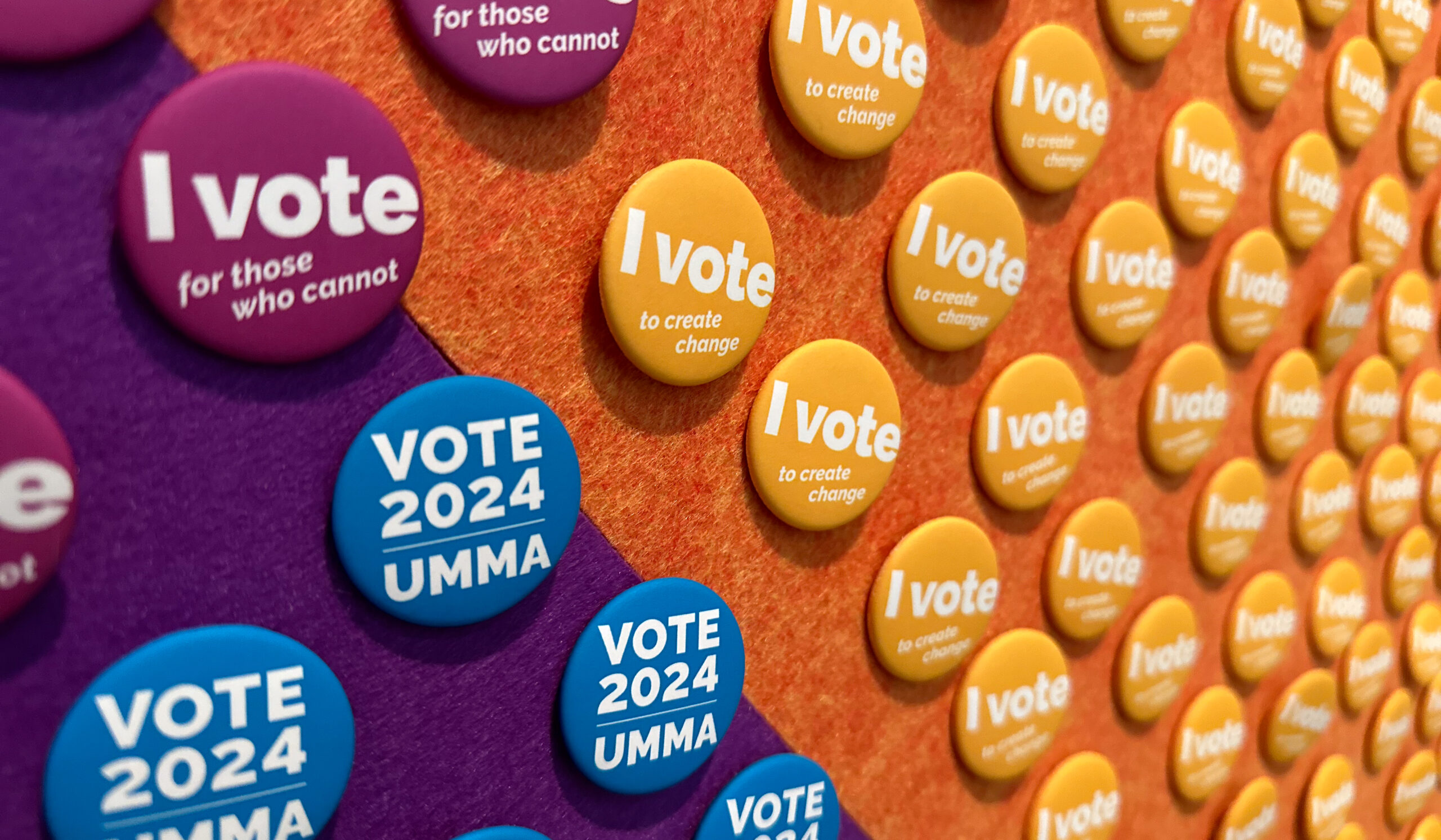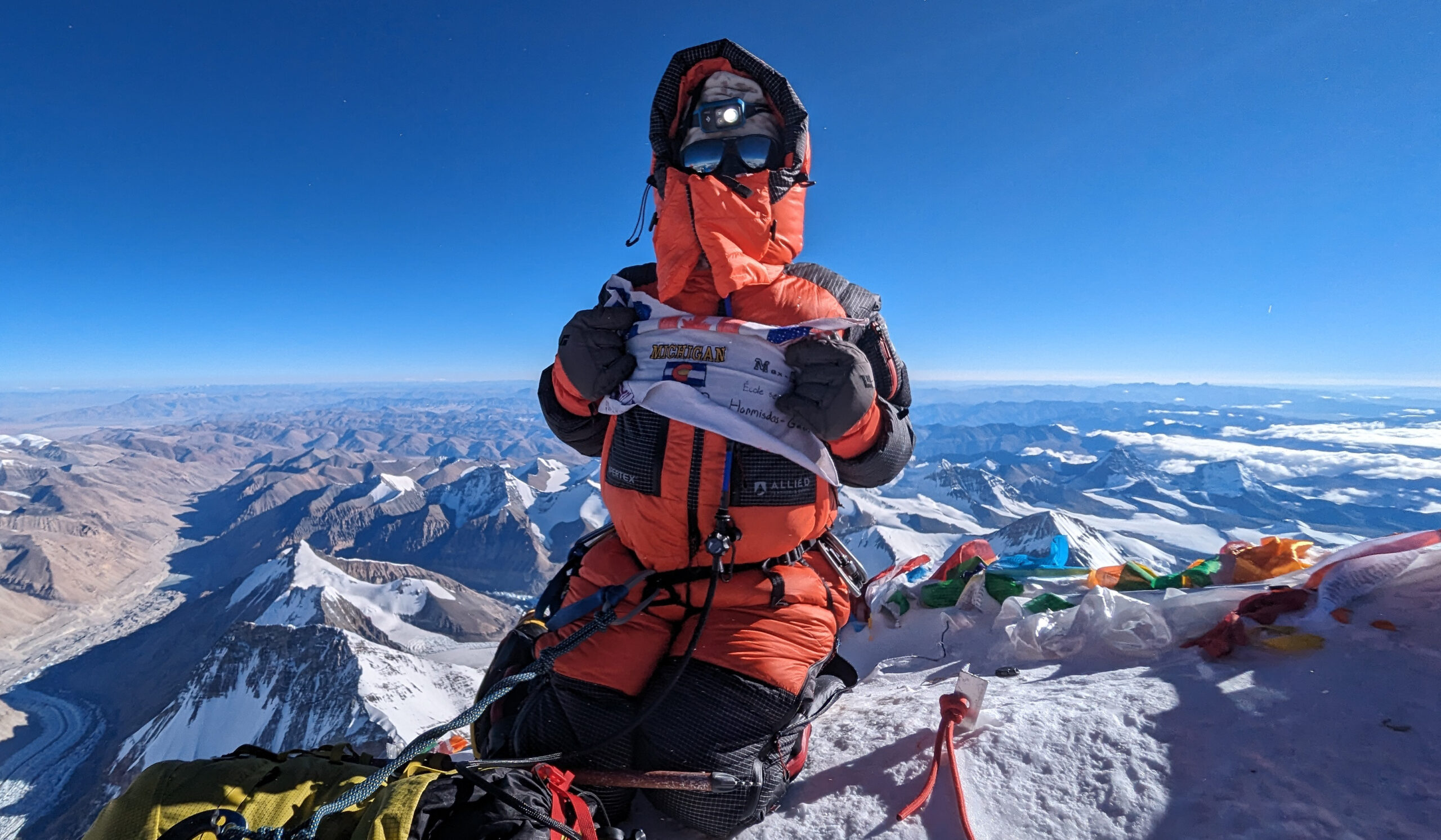It was in September 1966 that the starship Enterprise first warped into American living rooms on its five-year mission to boldly go where no man had gone before. Now the five years have become 50, and with six subsequent television series; 13 feature films, including the new “Star Trek Beyond” hitting theaters in July; and yet another series planned by CBS for early 2017, the Enterprise and its multitudinous offspring show no signs of aborting mission.
But the fans lining up for tickets this summer should know that they might not be there if it weren’t for a tiny ad that ran in the personals column of the Ann Arbor News on Dec. 30, 1971.
“Love Star Trek?” it read. “663-1004.”
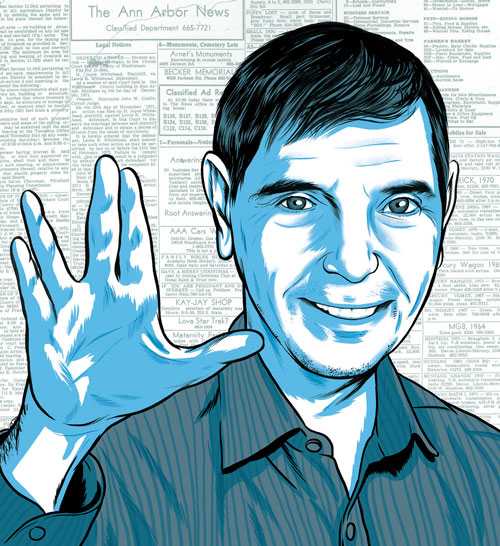
Those who dialed the phone number reached George Christman, now 65, a long-haired computer programmer for U-M’s Space Physics Laboratory. At the time, Christman was spending most of his off-hours floating in the deep end of Ann Arbor’s wild-and-woolly countercultural scene.
“Star Trek” had ceased production in 1969, but two years later was building a new audience through syndication. Although Christman hadn’t seen the show during its original run, he enjoyed watching the reruns. But when he had watched the entire series, he didn’t start over. “I’m still that way today. I don’t like watching things more than once.”
Since everyone he knew liked the show, he couldn’t understand why it had ever been canceled. “I was kind of naïve, I guess,” he said. “But I thought maybe I could do something to bring it back.”
Christman came up with a name—Star Trek Association for Revival, or STAR—and placed his ad. The phone started ringing right away. “Most people were just curious, but a few were really into it,” he said. Word spread quickly, and before long STAR could boast several hundred Ann Arbor members with branch groups forming in other cities. That February, an article about Christman’s group appeared in the Michigan Daily, followed by a story in the Detroit Free Press.
“After that, there was no stopping it,” Christman remembered. “It went all over the country. They must’ve printed my address because I started getting tons of mail, too.” Membership eventually reached 250,000, spread over 13 countries and each of the 50 states.
STAR’s modus operandi was to flood the offices of Paramount Pictures with letters and phone calls demanding that “Star Trek” go back into production. As founder of the group, Christman became acquainted with Gene Roddenberry, the show’s creator, and met all of the original cast members. “George Takei (Sulu) was the most amiable.”
Christman remembers a particularly enjoyable afternoon spent watching television in a hotel bar with Jimmy Doohan, who played the Enterprise’s chief engineer, Scotty. It was 1972 and the Detroit Tigers were facing the Oakland Athletics in the American League playoffs. “He was an Oakland fan, and I was a Tigers fan. We talked about the game and drank beer.”
But Christman really wasn’t a Trekkie or Trekker or sci-fi groupie. He just liked the show and wanted more episodes to watch. When STAR started to become a fan club, he decided to bow out.
“Star Trek: The Motion Picture” premiered a few years later, in 1979. Christman was pleased but would have preferred a new series. Ironically, when the show finally returned to the small screen in 1987 as “Star Trek: The Next Generation,” Christman completely missed it. At the start of the 1980s, he had turned over a new leaf, leaving the rock ’n’ roll lifestyle behind and raising his kids, both U-M alumni, without television.
It wasn’t until the 21st century that the founder of STAR—who is now retired from U-M and an Uber driver—began following the adventures of the U.S.S. Enterprise again. He rented every episode of the various series and every one of the movies and watched them all.
But only once.
The “Star Trek” franchise has featured several actors who attended U-M. Learn more here about their U-M connection and their roles in the popular television series and films.
MARK LENARD
 After being discharged from the army at the end of World War II, Lenard studied theater at U-M, then moved to New York to start a long and successful acting career that lasted until his death in 1996 at age 72.
After being discharged from the army at the end of World War II, Lenard studied theater at U-M, then moved to New York to start a long and successful acting career that lasted until his death in 1996 at age 72.
He is famous for his recurring role as Sarek, father of the U.S.S. Enterprise’s iconic science officer, Mr. Spock. Lenard played Sarek in one episode of the original series; one episode of the short-lived Saturday-morning animated series; two episodes of “The Next Generation”; and in the feature films “Star Trek III: The Search for Spock,” “Star Trek IV: The Voyage Home,” and “Star Trek VI: The Undiscovered Country.” He also portrayed a Romulan ship’s commander in the original series and a Klingon ship’s captain in “Star Trek: The Motion Picture.”
NANCY KOVACK, ’55
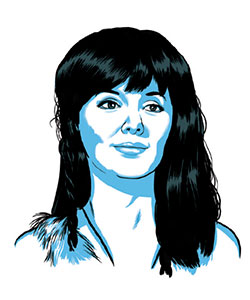 A friend’s wedding took Kovack to New York the day after she graduated from U-M, and she was discovered in a cattle call for the “Jackie Gleason Show.” After working as a dancer for Gleason, she landed roles in other television shows and films, acting alongside the likes of Vincent Price, Elvis Presley, and The Three Stooges. Throughout the 1960s, she appeared on popular programs such as “Bewitched,” “Perry Mason,” “Batman,” and “Mannix,” for which she earned an Emmy nomination in 1969.
A friend’s wedding took Kovack to New York the day after she graduated from U-M, and she was discovered in a cattle call for the “Jackie Gleason Show.” After working as a dancer for Gleason, she landed roles in other television shows and films, acting alongside the likes of Vincent Price, Elvis Presley, and The Three Stooges. Throughout the 1960s, she appeared on popular programs such as “Bewitched,” “Perry Mason,” “Batman,” and “Mannix,” for which she earned an Emmy nomination in 1969.
In a memorable episode of the original “Star Trek” series, Kovack played villainess Nona of the Hill People, who saved Captain Kirk from a poisonous gorilla bite, then knocked him out and stole his phaser, only to be killed later attempting to bargain the weapon to enemy villagers.
MICHAEL DUNN
 Dunn is best known for his role as the diminutive criminal mastermind Dr. Miguelito Loveless on the television series “Wild, Wild West.” To “Star Trek” fans, however, he will always be remembered as the dwarf Alexander from the original series episode “Plato’s Stepchildren.”
Dunn is best known for his role as the diminutive criminal mastermind Dr. Miguelito Loveless on the television series “Wild, Wild West.” To “Star Trek” fans, however, he will always be remembered as the dwarf Alexander from the original series episode “Plato’s Stepchildren.”
Dunn was a gifted actor and musician who came to U-M in 1951 intending to study government administration but was seriously injured after being knocked down a flight of stairs and spent the next three months in a hospital bed. Following his recuperation, Dunn transferred to the University of Miami and embarked upon a remarkable acting career that featured roles in “Bonanza” and “Night Gallery” as well as an Oscar nomination for his work in the movie “Ship of Fools.” He died in 1973, aged 38.
RICK WORTHY, ’90
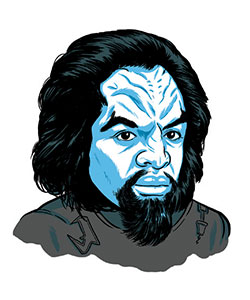 After graduating from the School of Music, Theatre & Dance, Worthy developed his theatrical skills in Detroit and Chicago before moving to Los Angeles. There, an audition at Paramount Studios landed him his first “Star Trek” roles. His impressive list of “Star Trek” credits includes five different characters in 14 episodes of “Deep Space Nine,” “Voyager,” and “Enterprise.” He also had a part in the 1998 feature film “Star Trek: Insurrection.”
After graduating from the School of Music, Theatre & Dance, Worthy developed his theatrical skills in Detroit and Chicago before moving to Los Angeles. There, an audition at Paramount Studios landed him his first “Star Trek” roles. His impressive list of “Star Trek” credits includes five different characters in 14 episodes of “Deep Space Nine,” “Voyager,” and “Enterprise.” He also had a part in the 1998 feature film “Star Trek: Insurrection.”
Many of Worthy’s other roles have also been in science-fiction or fantasy-themed shows, such as “Man in the High Castle,” “Battlestar Galactica,” “The Magicians,” “Supernatural,” and “The Vampire Diaries.”
BOOTH COLMAN
 His portrayal of a holographically simulated character in a 1997 episode of “Voyager” was one of hundreds of roles Colman played on stage and screen in a career that spanned more than 60 years. His resume includes such diverse credits as the television series “Dragnet,” “General Hospital,” “Planet of the Apes,” “Frasier,” and “Kung Fu” as well as the film “Norma Rae.” Each December for more than a decade, he traveled from Los Angeles to Michigan to play Ebenezer Scrooge in the Meadow Brook Theatre’s annual production of “A Christmas Carol.”
His portrayal of a holographically simulated character in a 1997 episode of “Voyager” was one of hundreds of roles Colman played on stage and screen in a career that spanned more than 60 years. His resume includes such diverse credits as the television series “Dragnet,” “General Hospital,” “Planet of the Apes,” “Frasier,” and “Kung Fu” as well as the film “Norma Rae.” Each December for more than a decade, he traveled from Los Angeles to Michigan to play Ebenezer Scrooge in the Meadow Brook Theatre’s annual production of “A Christmas Carol.”
During World War II, Colman came to the University to study at the Army-sponsored Japanese Language School. He died in 2014 at age 91.
Alan Glenn is president of the Michigan History Project, a 501(c)(3) educational organization based in Ann Arbor. For more information, visit michiganhistoryproject.org.



